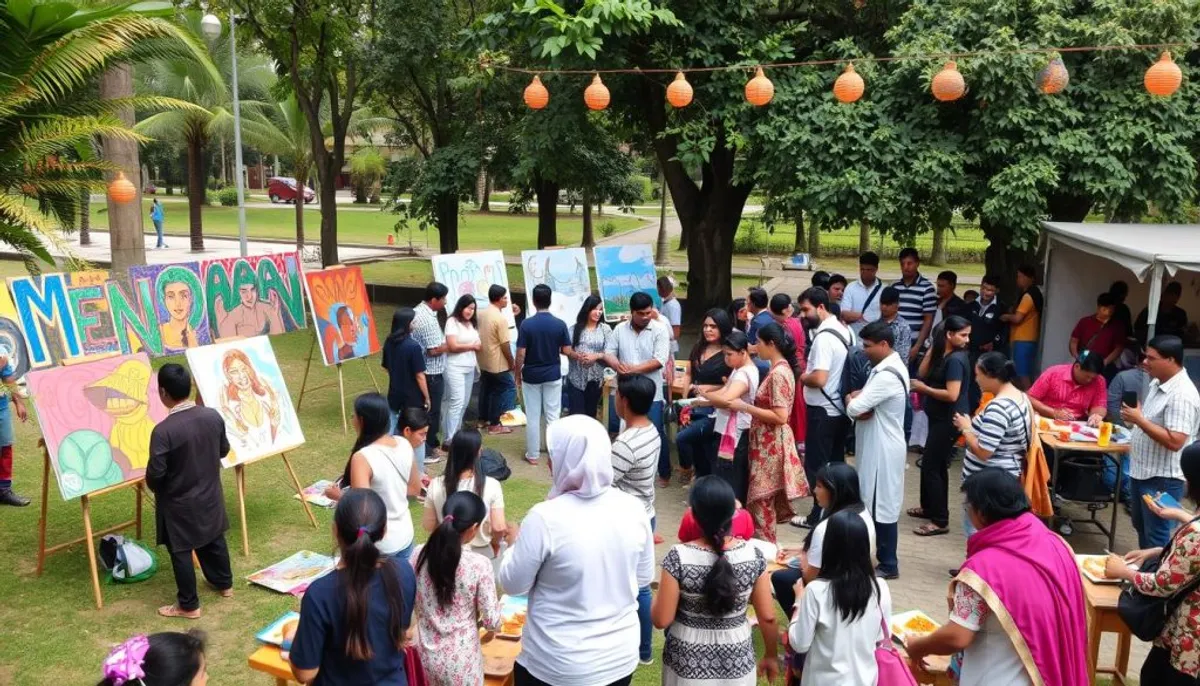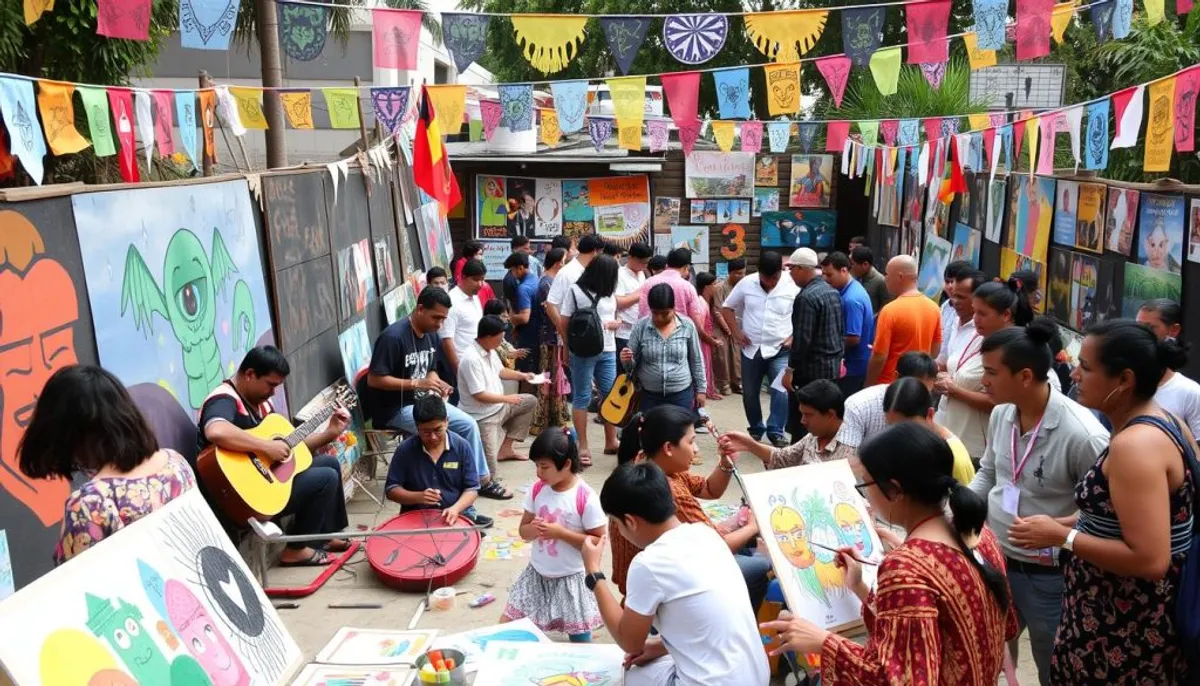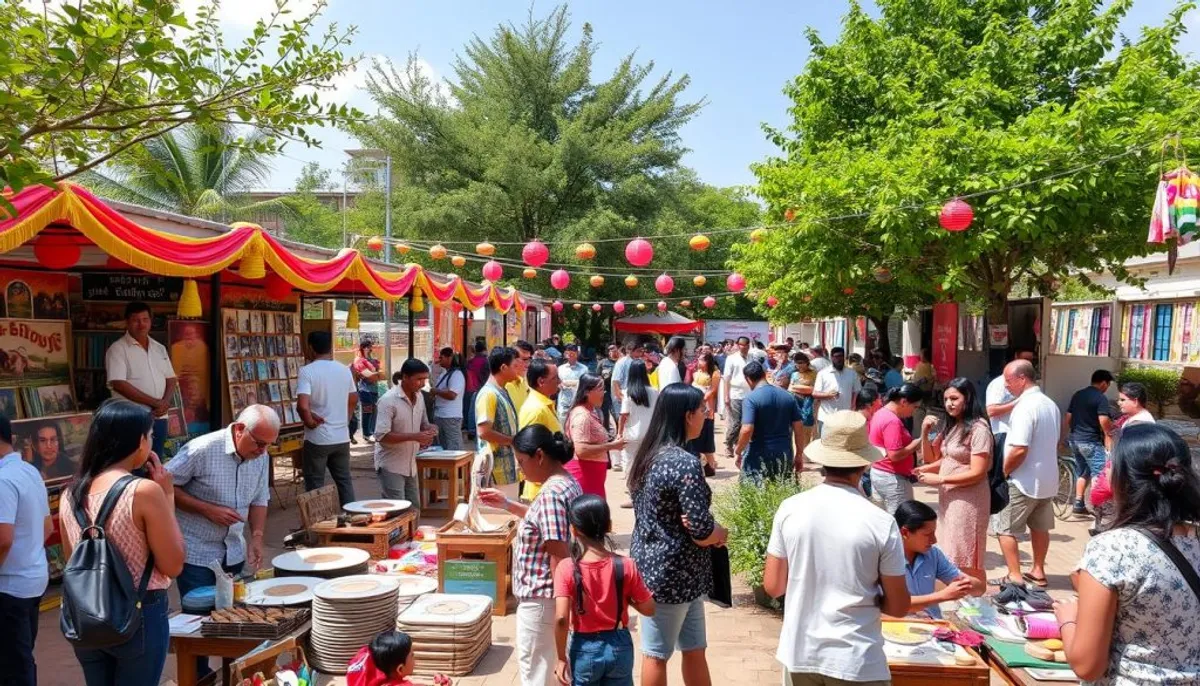The cultural project of the territory (PCT) plays a crucial role in local development. It aims to structure the cultural policy of a defined geographical area. It involves various stakeholders and promotes artistic actions.
The PCTs are part of a territorial dynamic at the scale of a living area. They emphasize intercommunal cooperation. This encourages collaboration between municipalities and local stakeholders to create a shared cultural vision.

These projects are based on three pillars: inter-collegiality, inter-sectorality, and interculturality. They involve artists, elected officials, technicians, and citizens in a participatory approach. The goal is to create a coherent cultural policy tailored to the needs of the territory.
For example, the cultural project of the Loire Forez agglomeration 2023-2028 covers 87 municipalities. It aims to ensure equal access to cultural offerings and to address post-pandemic territorial challenges. This PCT was developed with over 200 local stakeholders. This demonstrates the importance of citizen participation in these initiatives.
Definition and fundamental principles of a cultural project of the territory
The cultural project of the territory (PCT) represents a new path in territorial cultural policy. It aims to enrich local cultural life by involving all stakeholders in the territory. This innovative approach promises to energize the local cultural scene.
The concept of PCT according to experts
Cultural planners consider the PCT as a collaborative approach. It brings together residents, elected officials, agents, and field actors to develop a cultural policy. This policy is rooted in local realities, promoting participation and consideration of cultural rights.
The main objectives of a territorial cultural project
A PCT aims to:
- Promote intercommunal cooperation
- Enhance existing cultural resources
- Create links with other public policies
- Animate public space and create conviviality
The legal and institutional framework
Although not mandatory, PCTs are widely adopted by local authorities. The National Agency for Territorial Cohesion supports their implementation. Cities like Mantes-la-Jolie, Niort, and Bourges benefit from them. The Community of Agglomeration of Saint-Dié-des-Vosges launched a PCT in 2019 for its 77 municipalities, illustrating this trend.
The essential components of a PCT
A cultural project of the territory (PCT) is based on several fundamental pillars. These key elements ensure its success and sustainable impact on the community.
The intercommunal and participatory approach
Consultation among local stakeholders is at the heart of the PCT. Statistics show that 98% of intercommunalities manage at least one library or media library. This approach fosters increased citizen participation, with 96% of structures having a music school or conservatory. The networking of cultural facilities allows for an expanded offering and reaching diverse audiences.

The artistic and heritage dimension
The PCT emphasizes the enhancement of local heritage. Intercommunalities develop various initiatives: 82% target families, and 72% target young children. These actions include itinerant cultural events and collaborative creative spaces, thus enhancing the appeal of the territory and preserving its cultural identity.
The integration of cultural rights
Respect for cultural diversity is paramount in a PCT. 56% of intercommunalities target marginalized populations, promoting inclusion and access to culture for all. This approach relies on a transversal cultural policy, integrated with other public policies, to improve residents' well-being and democratize access to culture.
Operational implementation
Implementing a cultural project of the territory (PCT) requires meticulous cultural engineering and flawless coordination among stakeholders. This process, which spans several years, is exemplified by the project of the Pays du Velay, launched in 2012.
The stages of project construction
Setting up a PCT involves several crucial steps:
- A thorough cultural diagnosis of the territory
- The development of a strategy and priority axes
- The definition of an operational action plan
- Validation by decision-making bodies
For the Pays du Velay, the diagnosis required broad consultation. 68% of municipalities were involved, and 3 round tables gathered cultural stakeholders, also integrating social anthropology perspectives.
The role of different stakeholders
The success of a PCT relies on the involvement of multiple stakeholders:
- Local authorities lead the project
- Cultural associations and operators contribute to its content
- Residents participate in consultations and benefit from actions
Funding and partnerships play a crucial role in realizing the project's ambitions. The PCT of the Pays du Velay, for example, aligns with a global sustainable development approach for the territory.

The necessary resources
Implementing a PCT requires various resources:
- Human: teams dedicated to coordination
- Financial: budgets allocated to cultural actions
- Material: cultural venues and equipment
The project of the Pays du Velay illustrates this diversity of resources, with 16 detailed action sheets for the period 2022-2026. These actions aim to enhance heritage and structure cultural activity.
Areas of intervention and priority actions
Cultural Projects of the Territory (PCT) play a crucial role for local authorities and state services. They aim to enrich the local cultural fabric and promote territorial development. These initiatives focus on three pillars: artistic and cultural education, development of amateur practices, and enhancement of local heritage.
Artistic and cultural education
Artistic and cultural education is at the heart of PCTs. In the Loire Forez agglomeration, 4,400 residents and 2,000 students have been involved in artistic actions over the past three years. These cultural mediation projects aim to raise young people's awareness of the arts and culture. They seek to enrich them and open them up to the world.
Development of amateur practices
PCTs promote amateur artistic practices, essential for local cultural dynamism. Supporting cultural associations is a priority. They manage cultural services or participate in cultural animation and dissemination. This approach strengthens social ties and makes culture accessible to all.
Enhancement of local heritage
The enhancement of local cultural heritage is a major focus of PCTs. It involves actions for the preservation, restoration, and promotion of both tangible and intangible heritage. These initiatives strengthen territorial identity and stimulate tourist attractiveness, thus contributing to territorial development.
RelatedRelated articles


